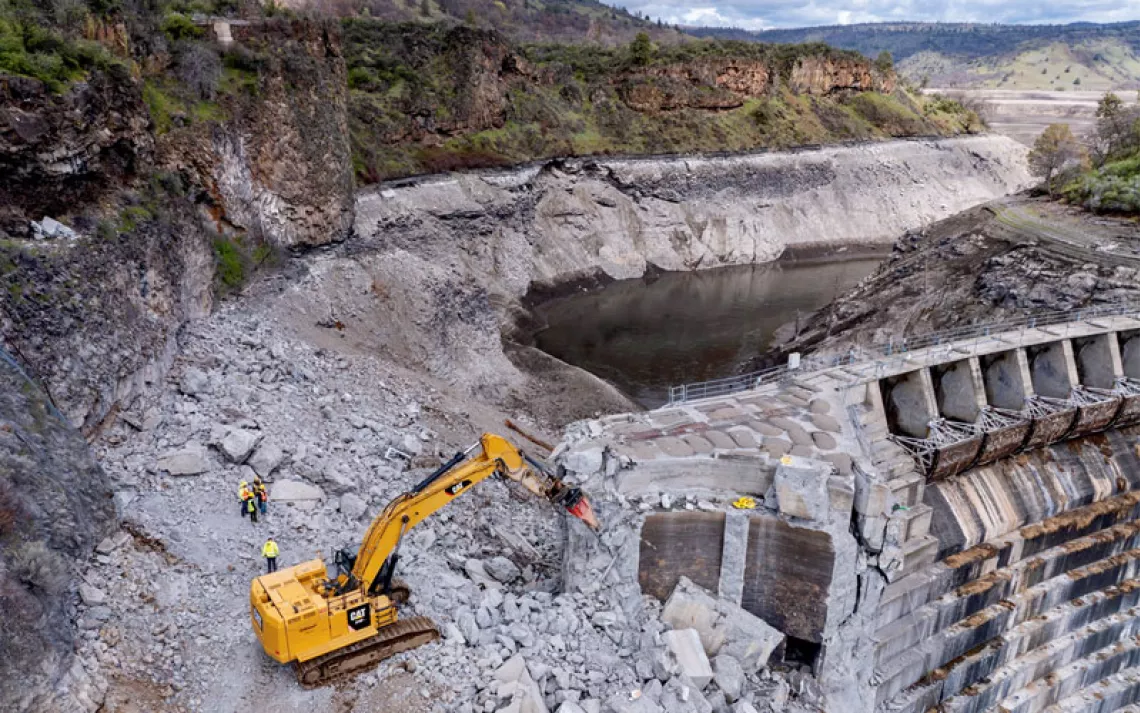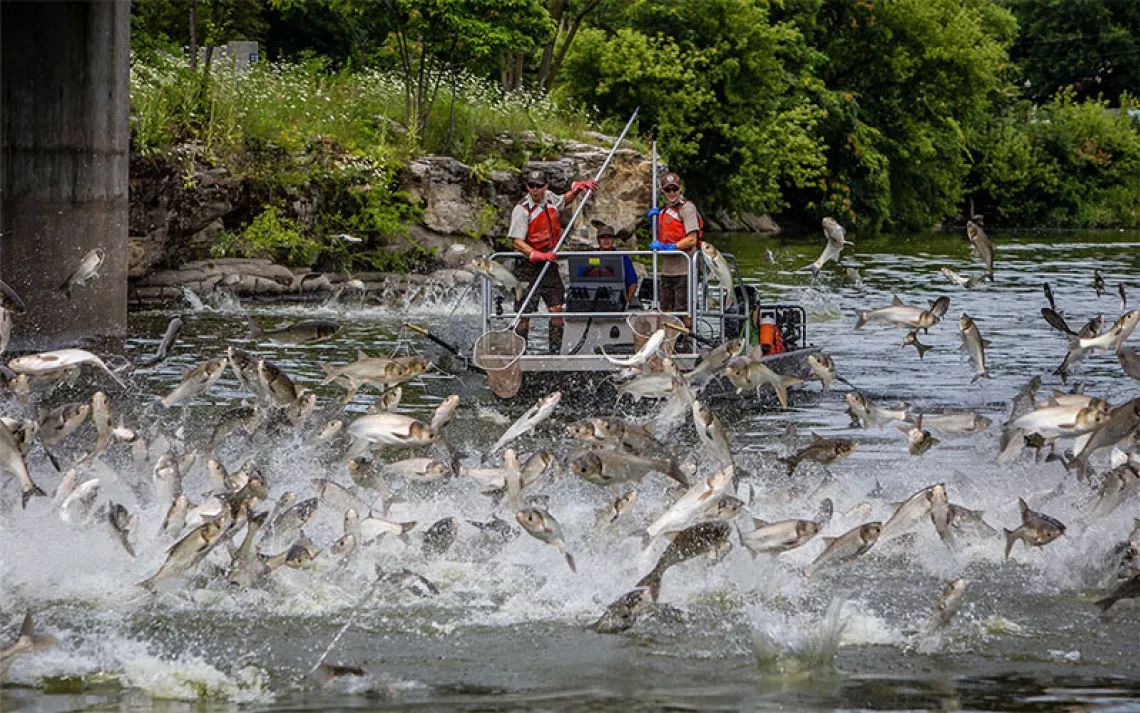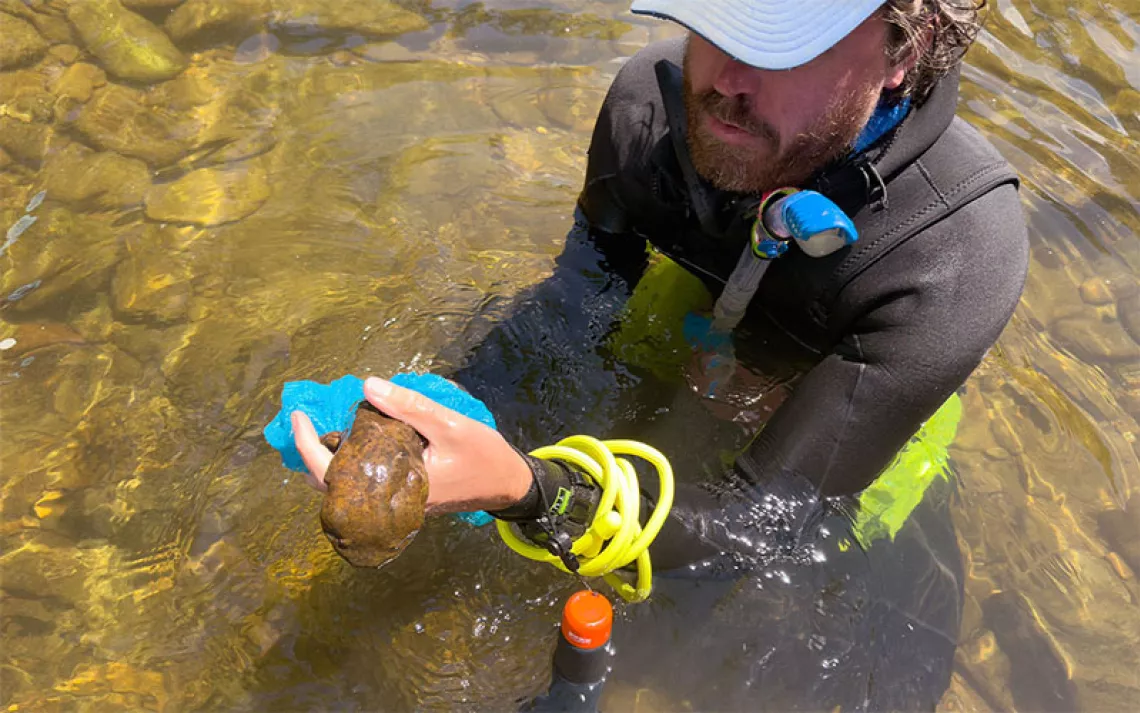As the Colorado River Dwindles, Inflation Reduction Act Steps In
The historic climate bill allocated billions to support water-starved states

Photo by iStock/4kodiak
This summer in the southwestern United States has been defined by climate chaos. At one point, more than 75 million people were under an extreme heat advisories, and temperature records were broken in cities throughout the region. As the climate warms, these kinds of events will become more common, straining states’ ability to care for the most vulnerable. The warmer temperatures have also intensified the drought—the most severe dry spell in nearly 1,300 years—and strained the Colorado River, which supplies 40 million residents in the West with drinking water, to the breaking point. That’s why a group of western Democrat senators including Colorado’s Michael Bennet, Nevada’s Catherine Cortez Masto, and Arizona’s Mark Kelly secured $4 billion in funding as part of the Inflation Reduction Act to deal with persistent drought.
The funds will be directed to the Bureau of Reclamation, the federal agency that operates and maintains hundreds of dams and reservoirs across the country, including Lake Powell and Lake Mead. The Inflation Reduction Act stipulates that the $4 billion can be spent in one of three ways: to pay water users to reduce consumption; to fund conservation projects that reduce demand in the upper and lower basins of the Colorado River; and restorations of ecosystems and habitat directly harmed by drought. The bill also allocates $220 million to tribal nations (who collectively hold rights to 2.9 million acre-feet of Colorado River water) to fund climate resilience and adaptation programs.
In addition to funding for the Colorado River Basin, the Biden bill allocates another $8.3 billion “to address water and drought challenges and invest in our nation’s western water and power infrastructure, while rebuilding our existing projects to withstand a changing hydrology,” according to a Department of the Interior press release.
Less than a week before the Inflation Reduction Act was signed into law, the Department of the Interior announced a Tier 2 shortage on the Colorado River. That declaration, a first in history, was made after lake levels in Lake Mead fell to an all-time low. At full capacity, Lake Powell and Lake mead contain enough water to cover an area the size of Idaho in water a foot deep. Both now sit at just over a quarter of capacity. In their diminished state, they have emerged as potent symbols of the rapid aridification American West.
And states are now being forced to tighten their belts. Next year, Nevada will see its Colorado River allocations reduced by 8 percent and Mexico (which receives water from the US by treaty) by 7 percent. The biggest cuts, however, fall on Arizona, the junior rights holder on the Colorado, which will see its 2023 allotment slashed by more than a fifth. (The latest cuts follow last year’s Tier 1 shortage declaration, which shaved Arizona’s annual Colorado River allotment down by 18 percent, Nevada’s by 7 percent, and Mexico’s by 5 percent.)
Reclamation commissioner Camille Touton articulated the problem at a Senate hearing in June. “A warmer, drier West is what we are seeing today,” Touton said. “And the challenges we are seeing today are unlike anything we have seen in our history.” The seven states in the Colorado River Basin must carve out 2 to 4 million acre-feet in water reductions if there is any hope of stabilizing water levels in Lakes Powell and Mead, Touton added. To put that figure in perspective, it is roughly one-fifth of the 15 million acre-feet allocated annually to the seven states in the Colorado River Compact.
Robert Glennon, emeritus professor of law at the University of Arizona, says that there are solutions available that can save the Colorado River from ecological and hydrological collapse. While residential water scofflaws and “lawn cops” in Las Vegas and Los Angeles draw headlines, the biggest and most conspicuous user of the river water by far is agriculture, which accounts for roughly 80 percent of use. In Pinal County, near Phoenix, for example, water is delivered at great expense across the desert to irrigate tens of thousands of acres of water-intensive crops such as cotton and alfalfa (a large portion of the latter is shipped overseas to feed livestock). Efforts to update infrastructure such as improving canals and replacing antiquated flood irrigation systems with modern drip irrigation could reap potentially large savings, says Glennon. But these projects are also very expensive and, therefore, subsidies and grants will be necessary to aid in the transition. “Farmers tend to be land rich and cash poor, so the bureau could play a major role in helping farmers modernize their infrastructure,” Glennon said.
Glennon also noted that farmers can adjust their methods to save more water. “Alfalfa grown in the summer takes four times the amount of water as alfalfa grown in the winter,” he said. “This is just such an easy fix it’s a no-brainer.” But he is opposed to top-down mandates that tell farmers what to grow. Instead, he believes a combination of market mechanisms and government assistance can protect farmers and rural communities while helping to encourage water savings. “Government can help farmers transition, but there has to be some understanding that farmers will reduce their consumption of water. This gets really tricky, but it can be done.”
To avoid a total collapse of the Colorado River system, basin states must begin to work together to find solutions to these tricky problems. Sacrifices must be made. “We can’t solve the problem without pain,” said Glennon. “Everyone has to take an oar or we’ll all sink.”
 The Magazine of The Sierra Club
The Magazine of The Sierra Club



